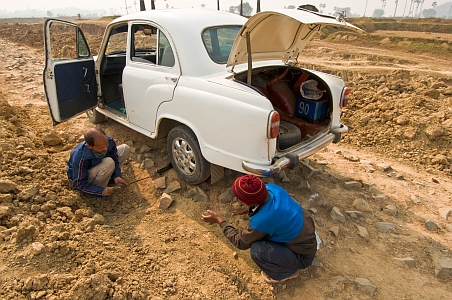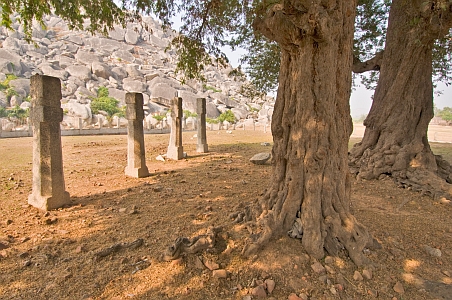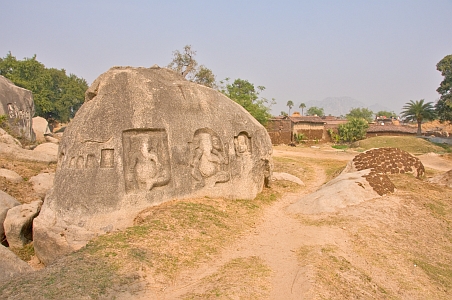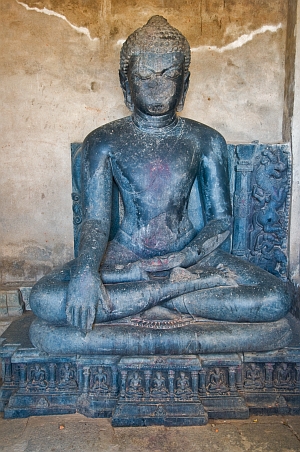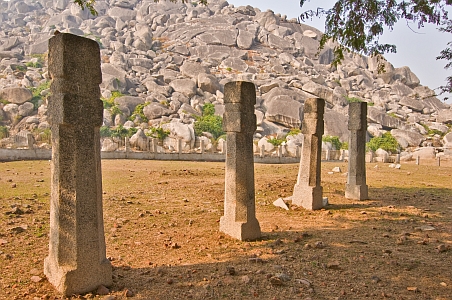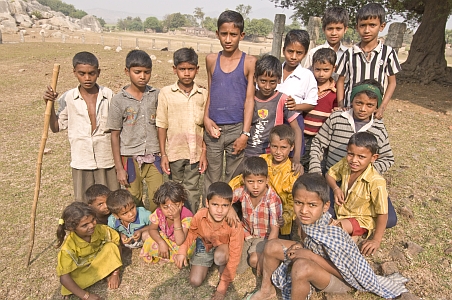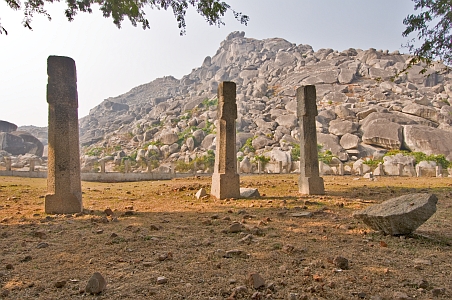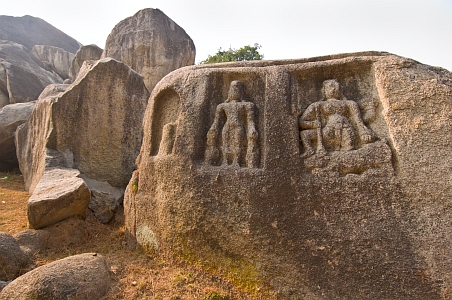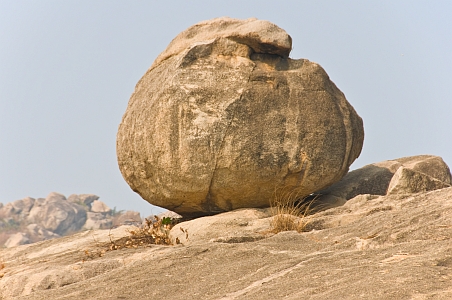The Barabar Caves - 8: Searching for the Kawa Dol
The term 'Kawa-Dol' is mentioned a number of times by E.M. Forster in his novel 'A Passage To India'. It has a dual meaning: first, it is taken to means a 'rocking stone', a huge boulder that swings on the summit of the highest of the hills. Forster writes that 'Inside this boulder is a bubble-shaped cave that has neither ceiling nor floor, and mirrors its own darkness in every direction infinitely. If the boulder falls and smashes, the cave will smash too — empty as an Easter egg. The boulder because of its hollowness sways in the wind, and even moves when a crow perches upon it: hence its name and the name of its stupendous pedestal: the Kawa Dol'. As you might guess from the last few words of that quote from the original book, the second meaning to the term 'Kawa-Dol' is that of the support to the rocking stone, in other words, the mountain itself.
In David Lean's film, the term 'Kawa-Dol' is mentioned twice. The first time is when Dr Aziz tell the ladies of his expedition 'The best caves are higher up, under the Kawa Dol.' The second mention comes when the Indian guide who takes the group into the lower Marabar cave shouts 'Kawa-Dol' to demonstrate the effect of the remarkable echo. I therefore felt that if anything more could be learned about the Kawa Dol whilst in the area, it should be taken advantage of.
We left the caves at Nagarjuna Hill, driving along the rock strewn road and getting stuck at one point as a rock jammed under the rear axle and left the wheels in mid-air. Ever resourceful, Mr Patel and the caretaker soon had the matter sorted out, and we drove some 5km south west as the parrot flies, or 12 km by road, to the village of Kurisarai, at the base of Kauwadol Hill.
I was made extremely welcome at the village. They don't see many foreign visitors there, so there was much excitement when the Amabassador arrived. The usual mob of small boys jumped up and down with glee, and the village head man was called for. He arrived with the village's Visitor Book, and insisted that I write an entry in it. There weren't many others, but I kicked myself later for not noting down some of the details.
The Kawa Dol Hill dominates the small village below it. It is an ancient historic site, and has some mention on the internet despite its remoteness. The most interesting notes are found in the Buddhist Circuit of Bihar website, from which some of the following details were obtained. They say that Kauadol (Kurisarai) was a town of the Northern Gupta period (6-7th century BC). At that date it was named as Shramanpur. The famous Chinese traveller Hieun-Tsang mentions 'Shilbhadra Mahavihar', which is believed to refer to here as well, possibly denoting the ancient Silabhadra monastery.
A number of archeological remains can be seen in and around the village, and the local boys were pleased to act as guides to each site. The most impressive is a large seated Buddha statue, which is housed in a caged and covered enclosure, but numerous other Hindu and Buddhist statues and carvings can be seen - details as to their identity can be guessed from the website mentioned above.
Little remains today of the Buddhist temple. In the 4th century BC it the ancient monastery of Silbhadra, a training centre for young Buddhist monks, who were called 'Shamner'. During this period Kurisarai was the training centre for not only Magadh but for the whole central region. Hiuen-Tsang is noted to have visited the site in the 7th century. According to historian Wenglar, the site here was sanctum sanctorum of the temple — where one mandap, a semi-mandap and a maha-mandap existed. (A 'mandap' is a pillared religious structure, or in this case the supporting sandstone pillars themselves). Until 1902 there were reportedly 13 mandap here, but now only 9-10 can be seen, of which 4 remain standing.
The website cited above mentions that other statues and carvings are to be found on the sides of Kawa Dol hill, and that there may even be further Buddhist remains on the top, but I did not have time to investigate further on this occasion. I am sure, though, that if any other travellers make it to Kurisarai, they will be assured of a warm welcome and no shortage of eager guides to show you around.
During my short visit to Kurisarai I had been shown a number of highly interesting ancient artefacts, but the question of the rocking stone, with its bubble-shaped cave remained. In the photo above, you can see a large boulder on the very peak of the hill. Was this the stone that Forster talks about? There was no one in the village who spoke English, and so I was unable to ask the question to those who might know. The differentiation between Kawa Dol - the mountain and Kawa Dol - the rocking stone was a difficult concept to get across using sign-language. The time was drawing on, and I was eager to leave the area before dusk, when it again becomes the haunt of various dacoits, gangsters and assorted 'badmash'. A climb to the top must wait for a future visit to the friendly village of Kurisarai.

